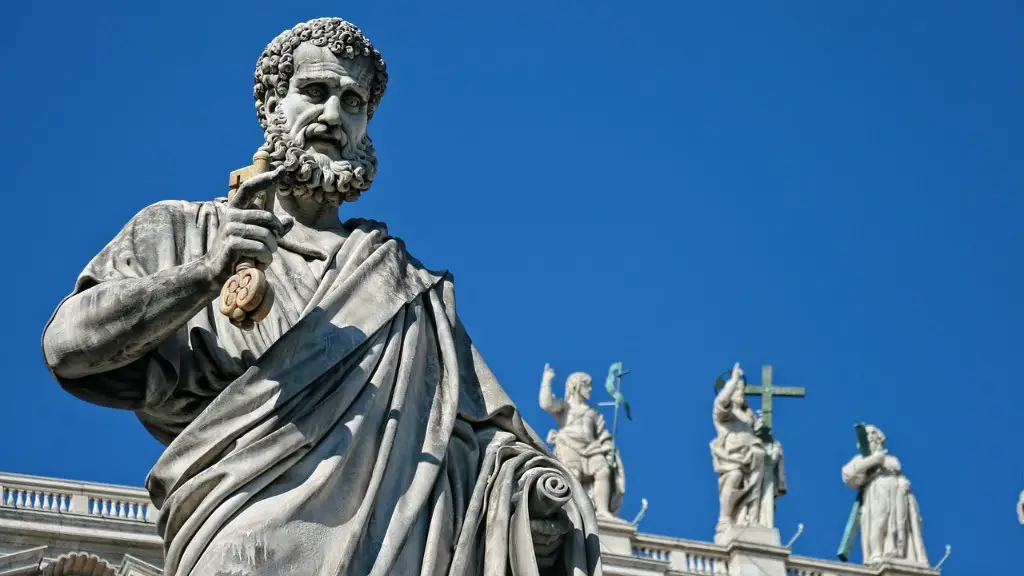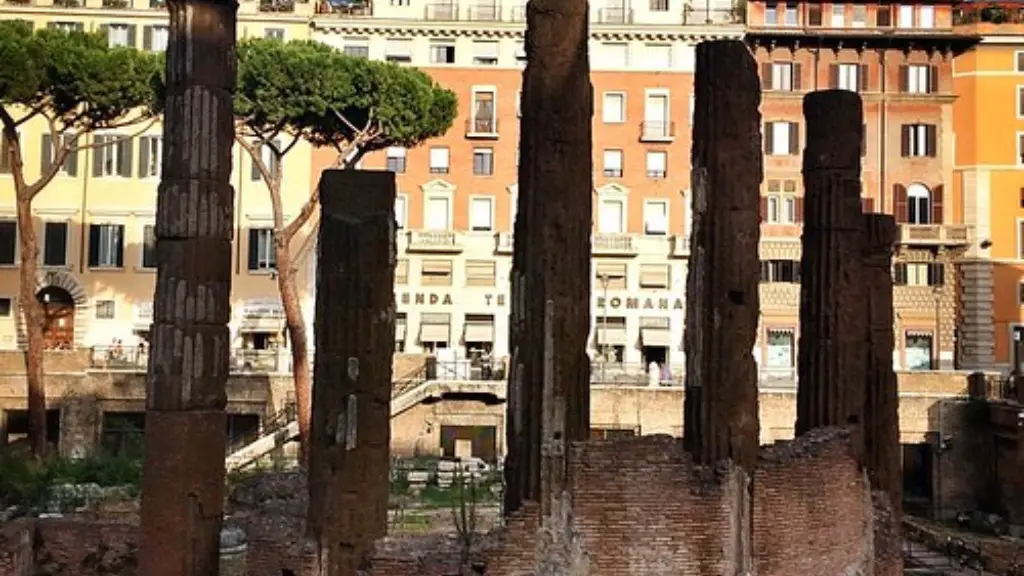The Roman Empire was one of the greatest empires in the history of the world. It was a powerful political and cultural force that formed the basis of much of today’s Western society. Ancient Rome was an immense and diverse civilization, spanning over three thousand years of history that encompassed several different cultures, religions, and languages. Its rise and fall has had a great impact on the world today and its influences can still be seen in many aspects of life. So why was Ancient Rome so important?
Since its founding in 753 BC, Ancient Rome grew from a small city-state to become the most powerful force in the ancient world. Its social and political structure enabled it to conquer and absorb other cultures, giving it an extensive reach across the Mediterranean and beyond. Ancient Rome was also famed for its engineering and construction feats, such as the construction of the Colosseum and the aqueducts which provided the city with fresh water. The Roman armies were also highly disciplined and well-equipped, allowing them to dominate large areas of Europe and the Near East. Ancient Rome was also advanced in its government, laws, literature, and philosophy, and its influence can still be seen in international politics, lawmaking, and art today.
Ancient Rome’s influence in the modern world is difficult to overstate. Its political and legal systems were adopted by many countries around the world, forming the foundation of some of today’s governing structures. In terms of language, Latin, the language of the Romans, has been preserved in the West and still has an impact on many languages today. The Romans also developed a system for measuring time, based on the length of the day and night, which forms the basis of the modern calendar. In terms of culture, Roman art and literature have also had a lasting impact, with many famous works of literature, such as Ovid’s Metamorphoses, still widely studied today.
In addition to leaving a lasting impression on Western culture, Ancient Rome was also the birthplace of the Catholic Church, which had a huge influence on Europe and the world in terms of religion and politics. The Catholic Church has shaped the lives of billions of people, and its impact can be seen in everything from architecture to government systems. The Roman Empire’s legacy can also be seen in its influence on modern Europe. After its fragmentation in the fifth century, the Roman Empire’s legacy endured; many of the states and nations that were formed in its wake were largely influenced by its political and social systems.
The undeniable influence of Ancient Rome has had a profound impact on the modern world. Its engineering feats, governance, and social structure were trailblazers in the ancient world. There can be no denying that the legacy of Ancient Rome is still strongly felt today, from language to politics to religion.
The Impact of Ancient Roman Architecture
The impact of Ancient Roman architecture on the modern world is evident in every city on earth. Ancient Roman architecture is known for its bold and grandiose designs, which incorporated sleek and curvaceous lines, dramatic archways, and large domes. The Colosseum, for instance, is an iconic example of this architectural style. It is one of the most recognizable building in the world and is still largely intact, despite being over two thousand years old. Similarly, the Pantheon, another iconic example of Ancient Roman architectural prowess, is still used as a church today and its dome can be seen on many modern structures influenced by its design.
The impact of Ancient Roman architectural design can also be seen in contemporary architecture. The sweeping archways, domes, and use of curved lines in Ancient Roman buildings has been replicated by architects around the world. Similarly, the use of concrete, a material that was pioneered by the Romans, is still widely used in modern construction projects. The creative use of curved lines and large domes were also advanced concepts during the time of the Romans, and these have had a great impact on the world today as architects continue to build inspired by ancient Roman designs.
In addition to this, the Romans also advanced the engineering of heating systems with their invention of the hypocaust system. This system utilized heated air to circulate warm air through the building. This was a revolutionary concept during the time of the Romans and its influence can still be seen in buildings today. Even though the technology has advanced, the basics of the system remain the same, proving the lasting influence of Ancient Roman architecture on the modern world.
The Influence of Ancient Roman Law
The influence of Ancient Roman law is still very evident in the legal systems around the world today. Ancient Roman law was an incredibly advanced concept for its time, developed over centuries to address the needs of a thriving society. Roman law was based on the idea of civil law, which includes the concept of tort law and contract law. It also decreed that certain punishment could be given for certain offenses and established rules for civil procedure.
The influence of Ancient Roman law can be seen in the laws and procedures of many countries today. Take the U.S. Constitution, for example. Many of the concepts and ideas in the U.S. Constitution were based on the concept of civil law, which was first established in the Roman Empire. In countries like the UK and Australia, many of the legal systems are still based on English Common Law, which is rooted in the influence of Ancient Rome’s civil law.
Other concepts of Ancient Roman law that are still used today include the concept of justice and fairness, the concept of trials and courts, the concept of punishment for wrongdoers, and the concept of legal representation. Roman law also established the idea of equity and justice for all, ensuring that everyone had equal rights regardless of their social status. Finally, Roman law also set forth the concept of double jeopardy, which prevents someone from being tried more than once for the same crime.
The Role of Ancient Roman Politics
The political system of Ancient Rome had a large influence on the shape of Western politics today. The Roman Republic, established in 509 BC, was a form of government that was heavily steeped in the concept of democracy and was based on the votes of its citizens. This form of government allowed for citizens to vote directly on the decisions made by their leaders, allowing them to have a voice in their government and in the laws that were made.
The concept of a two-party system also has its roots in the politics of Ancient Rome. The two most influential political parties in Ancient Rome were the patrician party and the plebeian party. These two political parties vied for power, often debating over the decisions that the Senate and other government bodies made. This concept has been adopted by many countries today, such as the United States, and the two-party system remains one of the most enduring political systems in the world.
Ancient Rome was also the birthplace of the concept of representative government. The Roman Republic was the first government to allow representatives to be elected who would act on behalf of the people. This system has been adopted by many countries since, forming the basis of modern democracy.
Teaching Methods of Ancient Rome
Although Ancient Rome was not the birthplace of formal education, it did have an impact on pedagogical techniques. The Romans were among the first to recognize the importance of education and the value of teachers in teaching students essential life skills. They developed a system of education that included the study of rhetoric, poetry, astronomy, and mathematics.
In Ancient Rome, education was divided into two stages. The first stage was known as the grammatica, with students studying the basics of reading, writing, and mathematics. The study of rhetoric, philosophy, and science was then added to the students’ curriculum in the second stage, known as rhetoricae, which was taught by a rhetor. The Roman rhetor was responsible for teaching students public speaking, debate, and other essential life skills.
The method of teaching also had a profound influence on Western pedagogy. The use of dialogue and debate, as well as the emphasis on rhetoric, has been adopted by many Western schools and is still commonly used today. Similarly, the focus on the development of communication skills has endured in modern pedagogical methods, with many teachers encouraging their students to practice public speaking and debating in the classroom.
The Influence of Ancient Roman Art
The impact of Ancient Roman art can still be seen in many of today’s artforms. Roman art was heavily influenced by the classical Greek art forms, and the contrast between the two is still very apparent in today’s art. Roman art is known for its focus on realism and its use of classical motifs and symbols. Ancient Roman art is often characterized by its attention to detail and its use of bold colors, which was a major contrast to the delicate and ethereal nature of Greek art.
The influence of Ancient Roman art can also be seen in many modern works. Its use of realism and its focus on movement and detail can be seen in many works of art today. The dynamic compositions and bold colors of Roman art have also had a great impact on the visual arts, inspiring many modern painters and sculptors. Even the art of film-making has its roots in Ancient Rome, taking cues from the great Roman dramatists, such as Seneca and Plautus.
Ancient Roman art is a testament to the power and creativity of the Roman Empire. Its influence can still be seen in many aspects of life today, from architecture to politics to art, and it is a reminder of the great legacy that the Roman Empire left behind.





